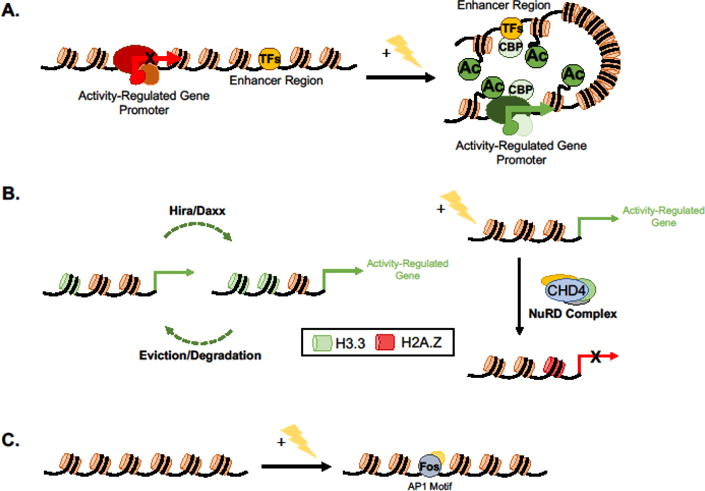Figure 2.

Histone modifications that modulate neuronal activity-dependent gene transcription. (A) Membrane depolarization-induced H3K27ac at distal enhancer regions and gene promoters is associated with the induction of activity-dependent gene transcription and the formation of stable loops between active enhancer regions and the promoters of their target genes. (B) Turnover of histone proteins results in regulated deposition of the variant histones H3.3 via Hira/DaXX and H2A.Z via the NuRD complex. H3.3 turnover facilitates the transcription of membrane depolarization-induced late-response genes whereas H2A.Z deposition at gene promoters represses the transcription of activity-dependent plasticity genes. (C) Neuronal activity induces changes in chromatin accessibility. Activity-induced opening of chromatin at distal regulatory elements is mediated via the recruitment of Fos and other AP-1 element binding proteins. TF, transcription factor; Ac, histone acetylation; CBP, Creb Binding Protein; CHD4, Chromodomain protein 4.
